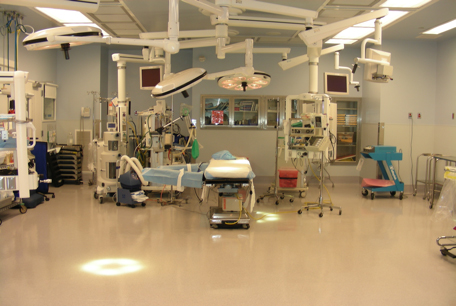

A difference in transfer rate was observed after credentialing in unadjusted (62.7% vs. No significant difference in age, admission Glasgow Coma Scale score, or shock index was observed preaccreditation to postaccreditation. ArcGIS Desktop was used for geospatial mapping of lives and geographic area covered by the addition of Level IV TCs in Pennsylvania.įive hospitals underwent Level IV credentialing from 2012 to 2017, providing data on 5,076 cases (pre, 2,395 post, 2,681 ). A multilevel mixed-effects logistic regression model assessed the adjusted impact of Level IV TC accreditation on transfer rate. Variables of interest included patient demographics, injury severity, mortality, and incidence of surgical interventions precredentialingto postcredentialing. Data from Pennsylvania Trauma Systems Foundation between 20 were analyzed. The Pennsylvania Trauma Systems Foundation collects predesignation and postdesignation data from hospitals pursuing accreditation. Level IV TCs were hypothesized to have a decreased time to transfer following accreditation and improved mortality. This study compared preaccreditation to postaccreditation data from Level IV TCs within a mature trauma system in Pennsylvania to determine whether TC designation affected time to and/or rate of transfer to definitive care. The EMS system assures appropriate patient care management from the time of injury to treatment at a local hospital or trauma center through the rehabilitative phase of care.The effect of Level IV trauma center (TC) accreditation within an existing trauma network remains understudied. They may admit mildly injured patients.Įach trauma center regardless of its level is an integral component of the emergency medical services (EMS) system. Level IV trauma centers provide enhanced care to injured patients within the emergency department and focus on stabilization and quick transfer to a higher-level trauma center. They may admit patients with mild and moderate injuries. Level III trauma centers are smaller community hospitals that do not require neurosurgeons and focus on stabilizing severe trauma patients prior to transport to a higher-level trauma center. Level II trauma centers require the same high level of care but do not require research and residency programs.
Pennsylvania trauma center levels full#
Level I trauma centers provide the highest degree of resources with a full spectrum of specialists and must have trauma research and surgical residency programs. In Pennsylvania, there are four levels of trauma centers. They are not intended to replace the traditional hospital and its emergency department for minor injuries. Accredited trauma centers must be continuously prepared to treat the most serious life threatening and disabling injuries. Trauma centers are hospitals with resources immediately available to provide optimal care and reduce the likelihood of death or disability to injured patients. The PTSF is the organization responsible for accrediting trauma centers in the Commonwealth of Pennsylvania. The Pennsylvania Trauma Systems Foundation (PTSF) is a non-profit corporation recognized by the Emergency Medical Services Act (Act 1985-45). Luke's University Health Network - Geisinger St. McConnellsburg – Fulton County Medical CenterĤ6. Lewistown – Geisinger Lewistown HospitalĤ5. Jersey Shore – Geisinger Jersey Shore HospitalĤ3. Hazleton – Lehigh Valley Health Network – Lehigh Valley Hospital-HazletonĤ2. Hastings – Conemaugh Miners Medical CenterĤ0. Grove City – Allegheny Health Network – Grove City Hospitalģ9.

Wynnewood – Main Line Health – Lankenau Medical Centerģ7.

Williamsport – University of Pittsburgh Medical Center – UPMC Williamsportģ5. Upland – Crozer Health – Crozer-Chester Medical Centerģ4. Sellersville – Grand View Health – Grand View Healthģ3. Scranton – Geisinger Community Medical Centerģ2. Sayre – Guthrie Robert Packer Hospitalģ1. Philadelphia – Jefferson Health – Jefferson Torresdale Hospitalģ0. Paoli – Main Line Health – Paoli HospitalĢ9. Monroeville – Allegheny Health Network – Forbes HospitalĢ8. Langhorne – Trinity Health Mid-Atlantic – St. Erie – University of Pittsburgh Medical Center – UPMC HamotĢ6. Camp Hill – PennState Health Holy Spirit Medical CenterĢ4. Bethlehem – Lehigh Valley Health Network – Lehigh Valley Hospital-MuhlenbergĢ3. Altoona – University of Pittsburgh Medical Center – UPMC AltoonaĢ2. Abington – Jefferson Health – Jefferson Abington HospitalĢ1.


 0 kommentar(er)
0 kommentar(er)
